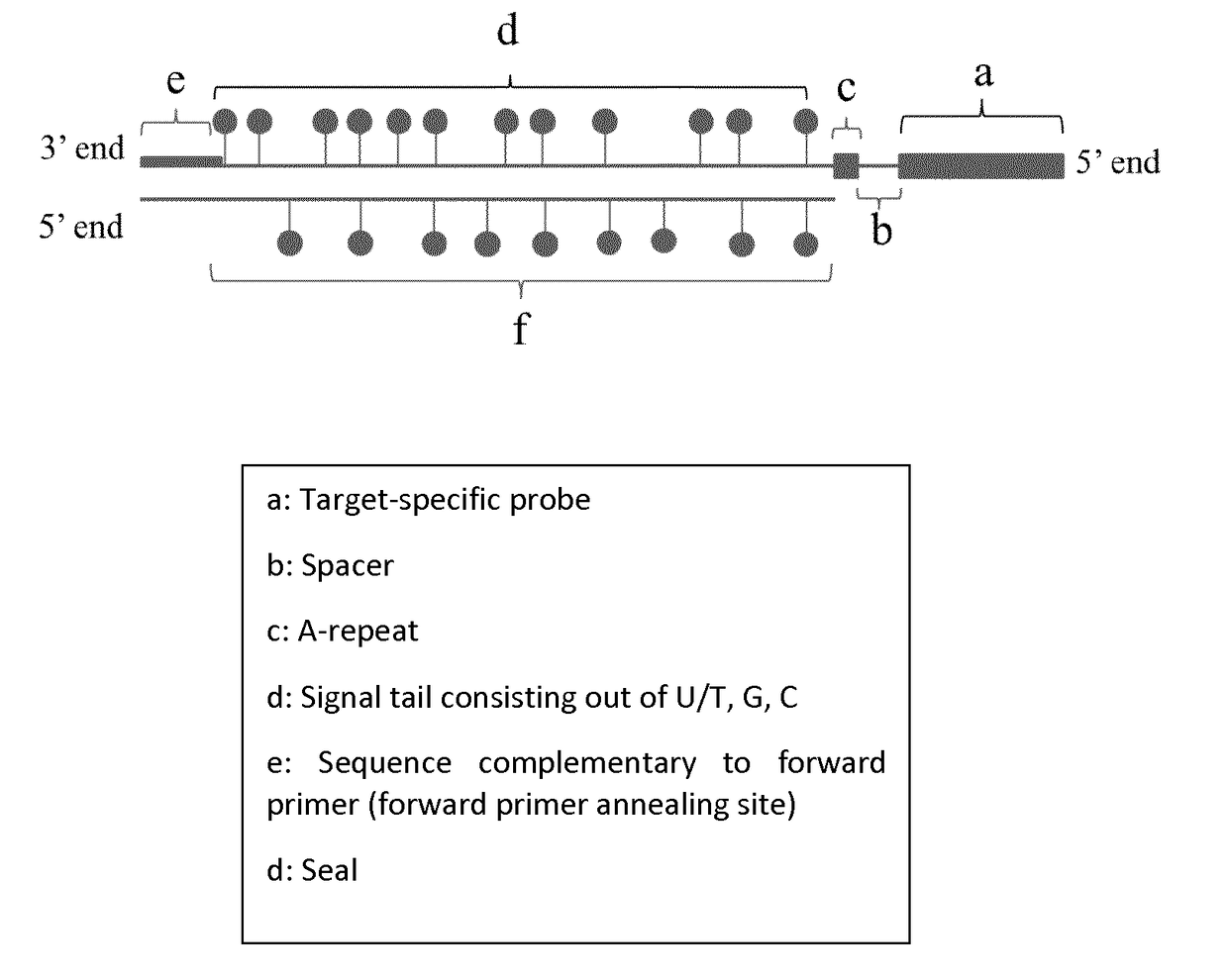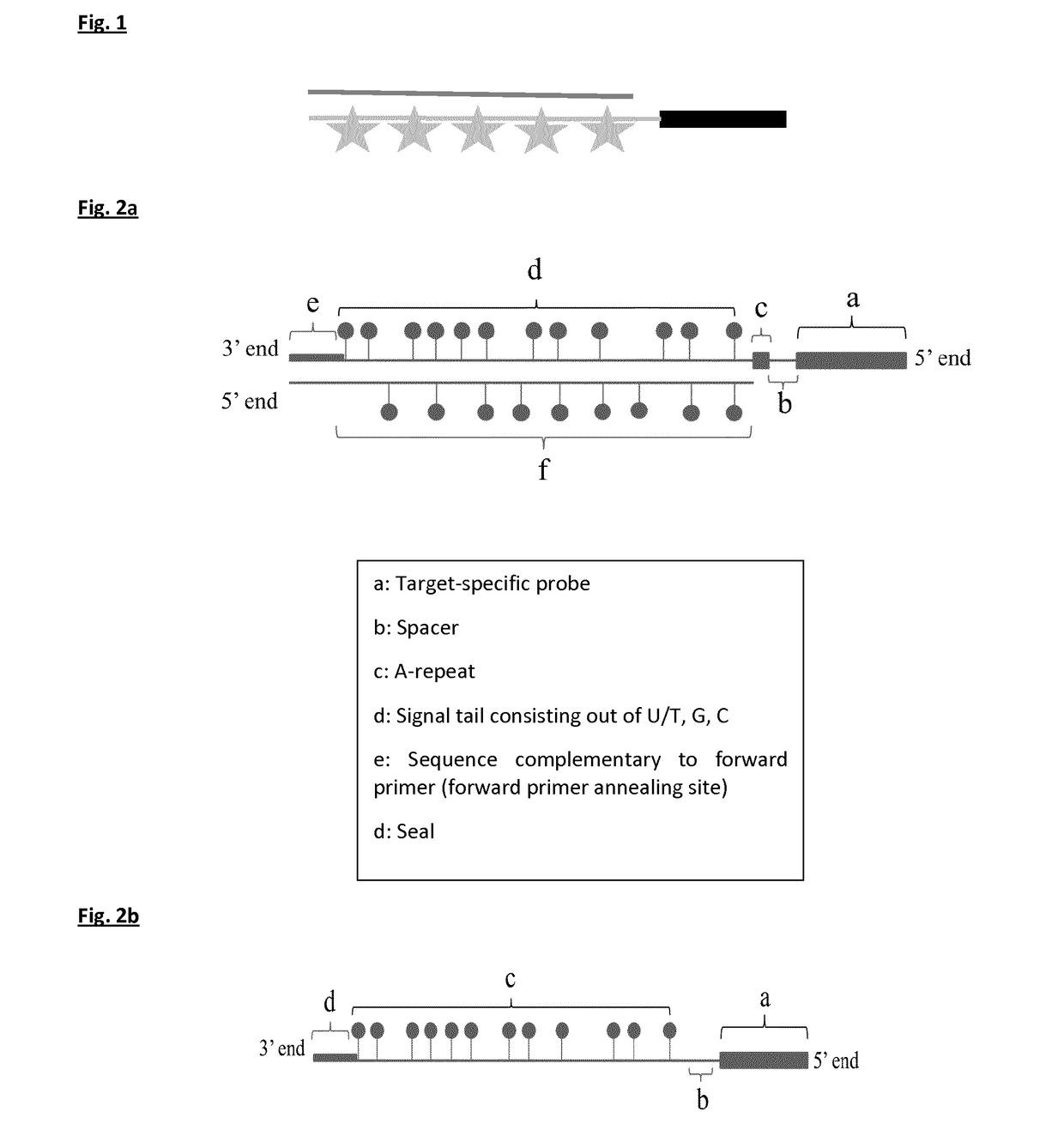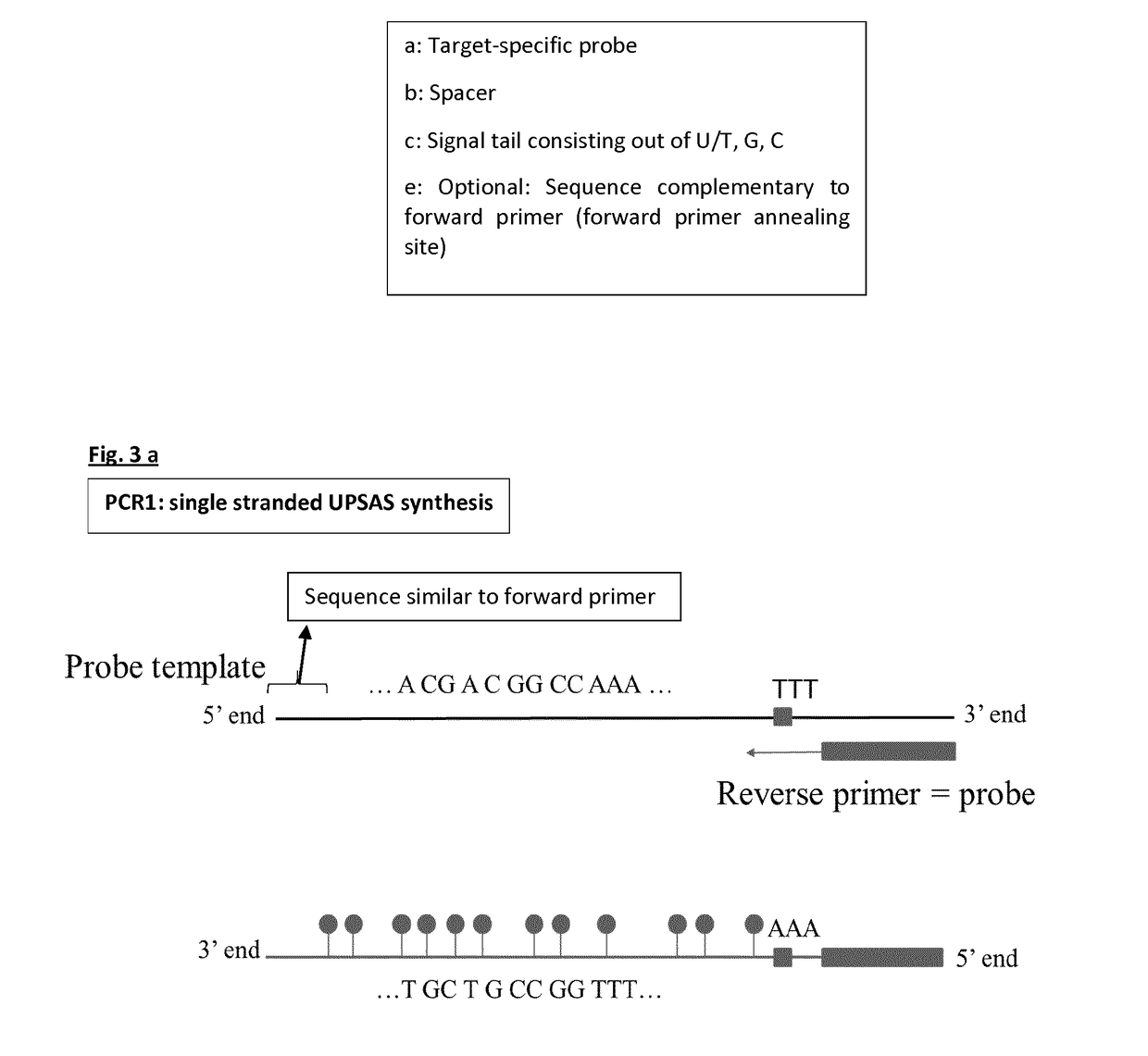Probes and a methylation in situ hybridization assay
a technology of methylation and in situ hybridization, applied in the field of molecular pathology, can solve the problems of reducing sensitivity, unable to quantify the target at physiological levels, and only 10% techniqu
- Summary
- Abstract
- Description
- Claims
- Application Information
AI Technical Summary
Benefits of technology
Problems solved by technology
Method used
Image
Examples
example 1
Synthesis of the UniProbe Signal Amplification System (UPSAS) Probe
[0149]Four different UPSAS probes corresponding to the Glutathione S-Transferase Pi 1 (GSTP1), hypermethylated regions in prostate cancer were designed and synthesized by PCR.
[0150]The four templates used for probe synthesis consist of five major parts (from 5′ end to 3′ end): 1) a sequence that is similar to the forward primer used in probe synthesis and sealing, 2) a part that consists of AGC nucleotides (template for signal tail), 3) a T-stretch of three nucleotides (this is included to stop probe sealing when probe sealing is performed with three nucleotides), 4) a spacer of nine nucleotides, and 5) a sequence that is complementary to the reverse primer and thus to the target-specific probe.
[0151]During the first PCR step, a forward primer (FP) with the same sequence as the sequence found at the 5′ end of the probe template and a reverse primer (RP) that will form the target-specific probe part of UPSAS, were use...
example 2
Probe Labeling is Performed Efficiently
[0154]Probes were run on gel to confirm probe labeling and to estimate the amount of labels per probe. The probes contained at least 250 labels after PCR1 and 500 labels after PCR2.
[0155]Biotin-labeled GSTP1 probes were spotted on a nylon membrane prior to staining with 3,3′-Diaminobenzidine (DAB): spots stained dark brown, indicating that labels were not only incorporated in the probes as could be observed based on the molecular weight size on gel, but also gave strong signals.
example 3
Tissue Morphology is Kept Intact after ISH Pretreatment Steps Combined with Bisulfite Conversion In Situ
[0156]3 μM formalin-fixed and paraffin-embedded (FFPE) cervical tissue sections were cut and stretched on the glass slide and deparaffinized in xylene. The sections were dehydrated two times for 5 minutes in 100% ethanol. Hereupon, the sections were incubated in 0.2 N HCl and washed with ultrapure water. The sections were treated for 28 minutes at 37° C. with porcine pepsin and washed two times for 5 minutes with ultrapure water. The sections were treated for 15 minutes with 0.1% TRITON® and washed for 3 minutes with molecular grade water afterwards. Subsequently, sections were incubated with 150 μl of a bisulfite mix (Zymo) for 4 hours. After a 15-minute desulfonation step, the samples were washed with molecular grade water and stained with hematoxylin and eosin (H&E) to evaluate conservation of the tissue morphology. Tissue morphology was evaluated by an experienced, university ...
PUM
| Property | Measurement | Unit |
|---|---|---|
| temperature | aaaaa | aaaaa |
| temperature | aaaaa | aaaaa |
| methylation heterogeneity | aaaaa | aaaaa |
Abstract
Description
Claims
Application Information
 Login to View More
Login to View More - R&D
- Intellectual Property
- Life Sciences
- Materials
- Tech Scout
- Unparalleled Data Quality
- Higher Quality Content
- 60% Fewer Hallucinations
Browse by: Latest US Patents, China's latest patents, Technical Efficacy Thesaurus, Application Domain, Technology Topic, Popular Technical Reports.
© 2025 PatSnap. All rights reserved.Legal|Privacy policy|Modern Slavery Act Transparency Statement|Sitemap|About US| Contact US: help@patsnap.com



